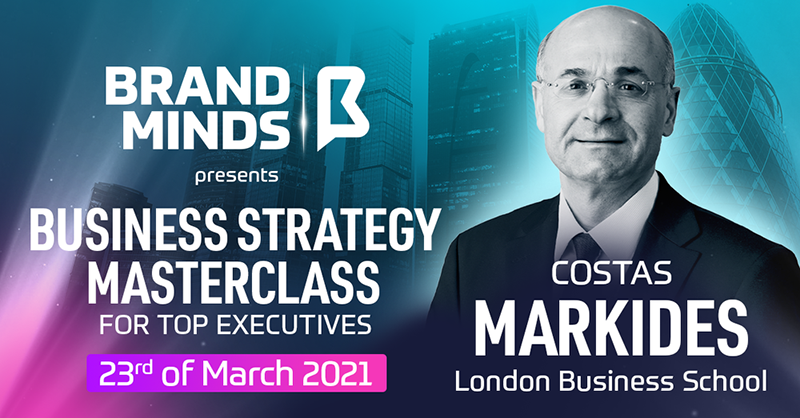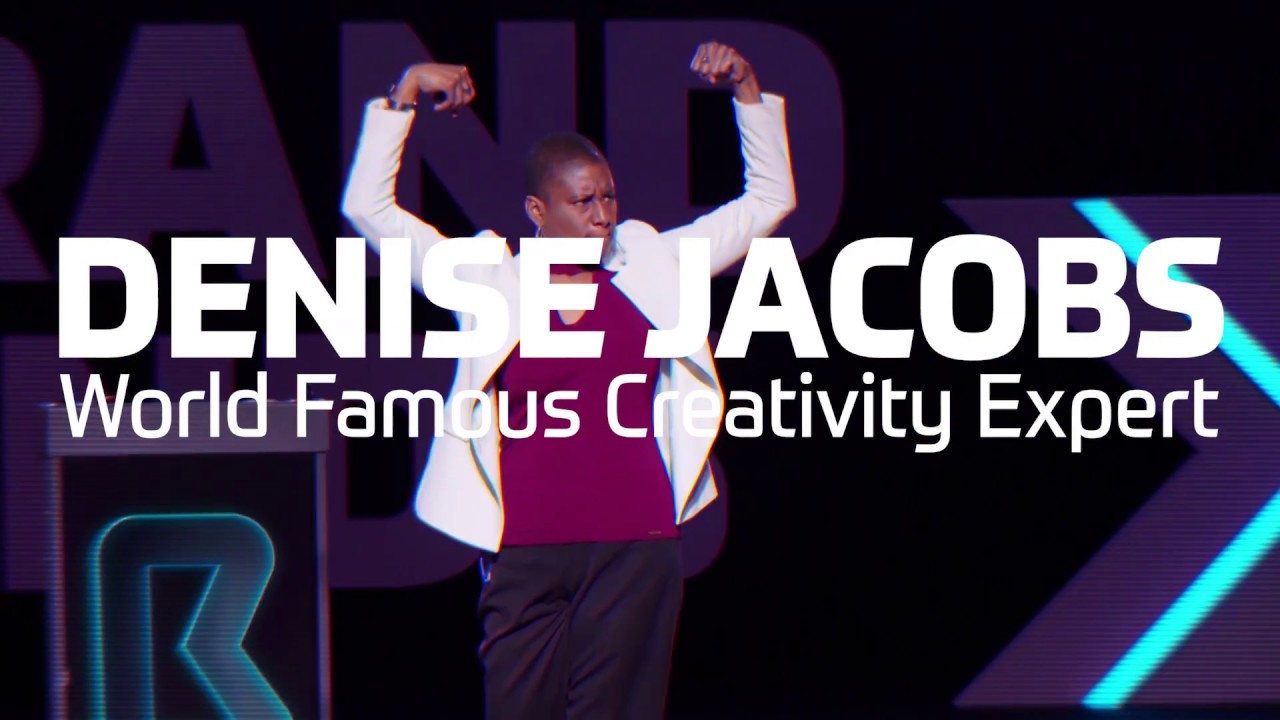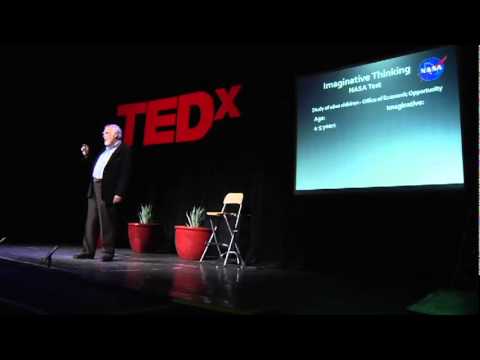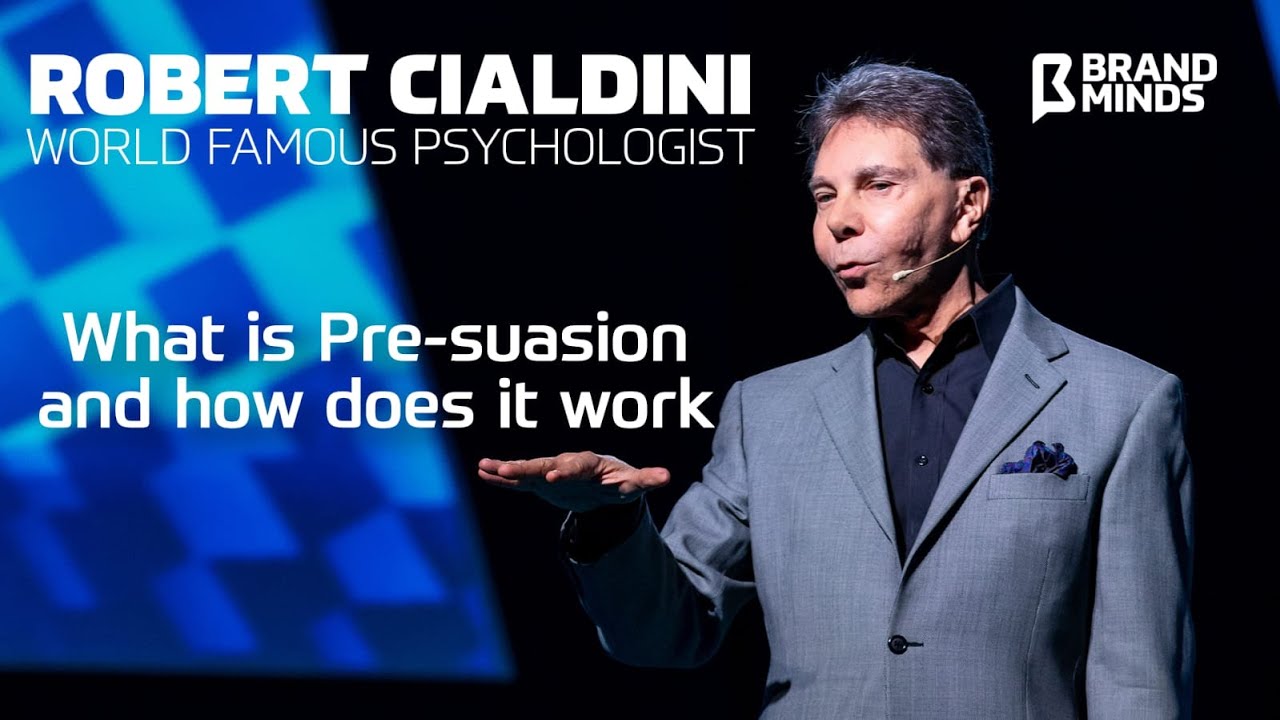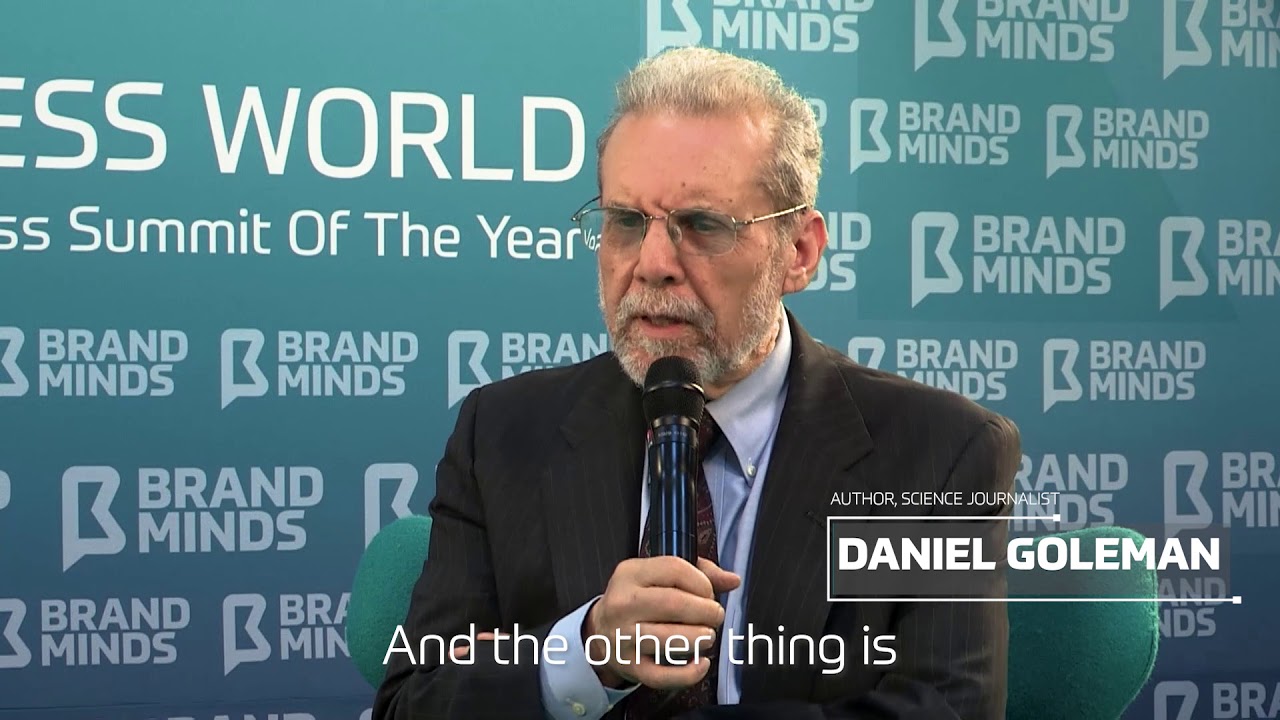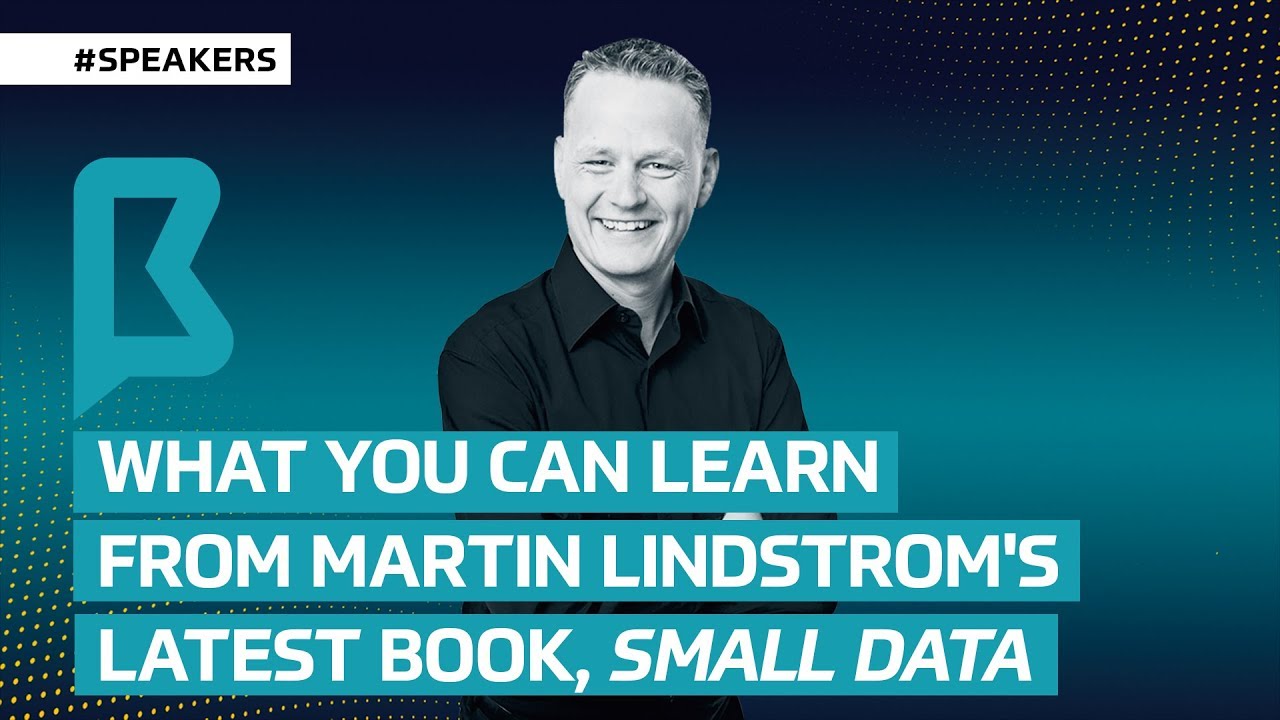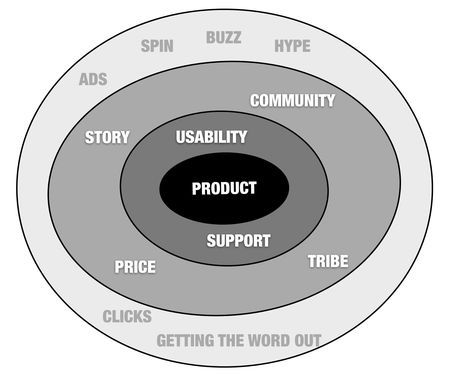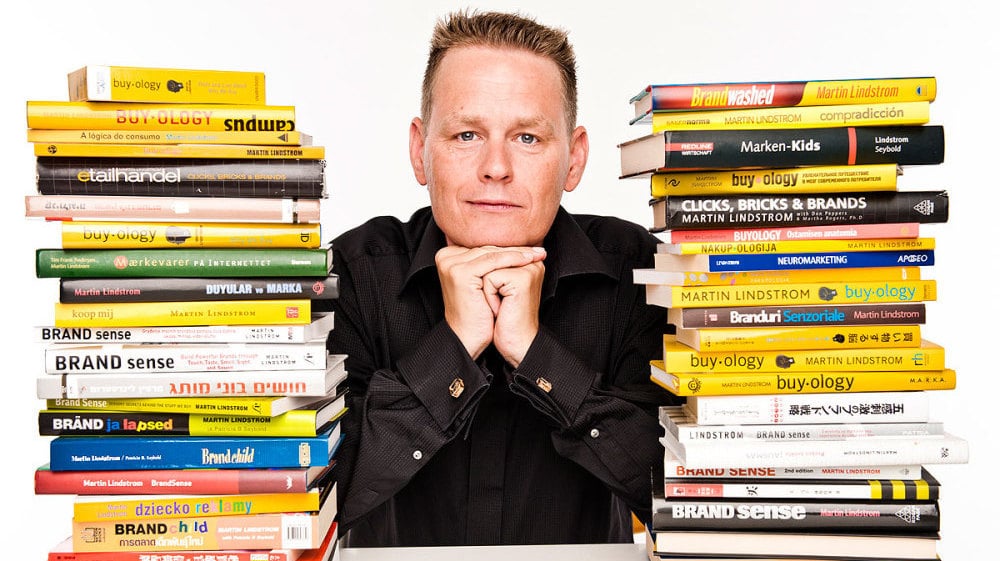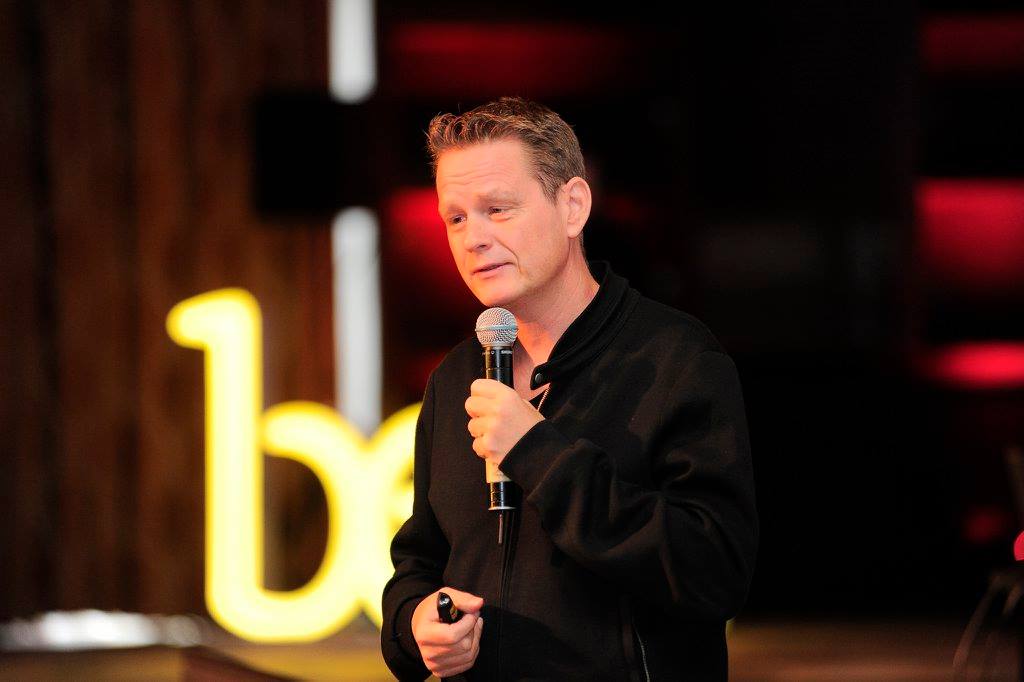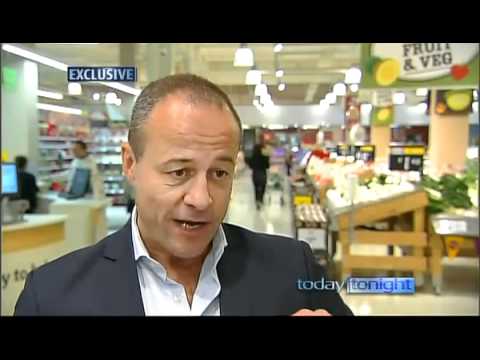4 takeaways from Martin Lindstrom’s Live Talk
Yesterday, BRAND MINDS hosted Live Talk with world-famous brand expert Martin Lindstrom to mark the launch of his latest book on organizational culture, The Ministry of Common Sense. This was the first time Martin has spoken about his new book to the public in Romania and we are stoked he chose the BRAND MINDS community.
Of the many valuable insights and recommendations that Martin shared yesterday, I chose four that I believe are more relevant to the current situation.
4 main takeaways shared by Martin Lindstrom during the live talk
1. See the world from your customer’s point of view.
The first rule of writing anything, from mini-copy to long-form content is to ask someone else for feedback.
The person creating the respective piece of content, the author, cannot give feedback. It takes a new pair of eyes to spot tiny mistakes or any other errors that the author just cannot see.
It’s the same with your product. You may believe that your product caters to the needs of your customers perfectly. Or that the buying journey your organization provides is a pleasant experience.
Unless you put yourself in your customer’s shoes, you don’t know that for sure. And once you see the world from your customer’s point of view, you might be in for a big surprise.
You might discover a number of frictions in your purchasing process that you were unaware of.
Here is an excellent example that attracted a lot of attention last year: how many clicks does it take to create a bank account?
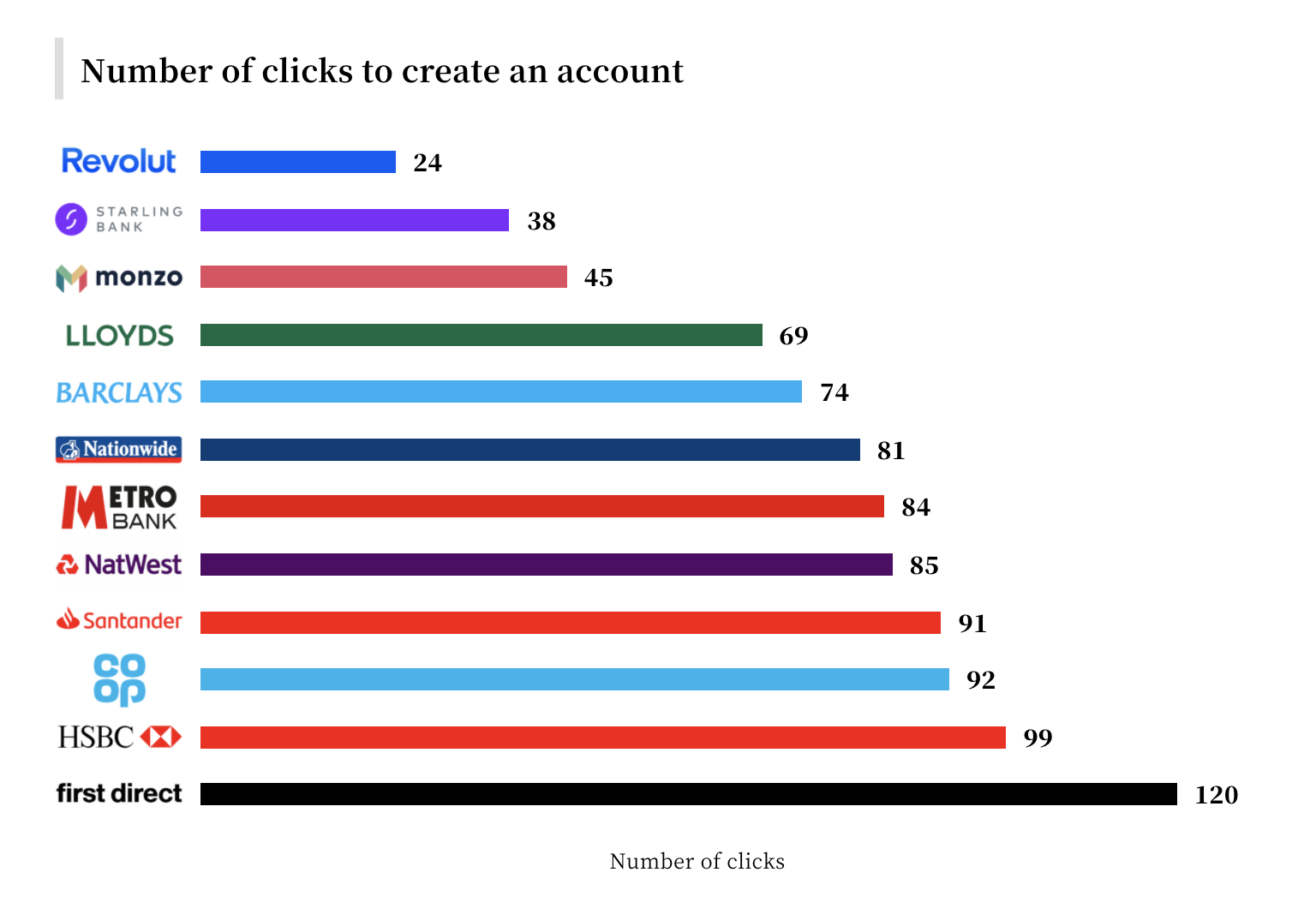
The author of this report opened a bank account at twelve different banks.
Time is a scarce resource. It’s the only resource we cannot make more of. Your customers feel the same too.
Looking at this report, which bank is seeing the world through its customer’s eyes in your opinion? Which bank provides the customer with the highest rate of friction regarding a basic operation like opening a bank account?
I’m certain that First Direct didn’t set out to establish such a time-consuming experience for their customers (120 clicks!). The experience they offer is correct and necessary from their point of view, not their customer’s.
Remember: you are not your customer.
As Martin pointed out yesterday, companies are seeing the world from inside out instead of outside in. We need to see things as they are and do things as they should be. Let’s treat our customers as they should be treated. That means showing empathy. When we show empathy, the happiness levels of our customers increase by 10%.
Empathy is what every person in business will be talking about in the comping years.
Martin Lindstrom
2. Your customer decides what is common sense.
When companies are just starting out, they are based on common sense and empathy.
As companies grow bigger, they shift from common sense to nonsense. A new layer of bureaucracy is added to the mix.
The number of rules increases and operations that were once easy to get done are now getting harder and harder to do. The organization is getting itself ever deeper into a paralyzing situation.
That’s why Jeff Bezos has been ending every one of his letters to shareholders with this phrase: It remains Day 1. Because a Day 1 type of company is nimble and agile while a Day 2 company is a giant that is slow at making decisions.
The organizational culture at Amazon is focused on delighting the customers. You cannot delight your customers if you don’t know what they want or expect from you.
How do you decide what is common sense for your organization?
It’s not up to you to decide.
Your customer will tell you what is common sense. What your organization needs to do is stay close to its customers and allow them to tell you what is common sense.
3. Measure productivity by how happy your customers are.
Since the pandemic changed our routines, more and more people are working from home.
Some organizations have reported an increase in productivity levels with voices saying the 9 to 5 workplace is dead.
Other reports draw attention to the mental health situation of the employees working from home who are experiencing fatigue, exhaustion or burnout.
In today’s world, how do you measure productivity?
Martin suggests a different approach to measuring productivity. Instead of how many Zoom calls we have participated in, let’s measure how happy our customers are.
Let’s measure the levels of employee satisfaction. Or how easy/difficult it is for colleagues to work with us.
We need to get back to making really valuable contributions like strategic thinking and creativity. We need to figure out how to measure creativity through a screen.
Ultimately, what organizations need to do is change their culture. You will never have a better time to redesign your company than now.
If you go through a crisis like this and you haven’t fundamentally changed your business, you didn’t get the message. This is the moment to change your business.
Martin Lindstrom
4. Find frictions in your organization and address them in 90 days.
What is friction in business? Friction is anything that prevents or dissuades customers from buying your products or services.
Take the number of clicks to open a bank account example above. Do customers have the time or patience to open a bank account after clicking 100 times? I know I would give up a few clicks into the whole process.
Now think of your organization. Is there a process that could be completed in fewer steps? Would customers benefit from a shorter purchasing process? Would the company website provide customers with a more pleasant experience if the UX was cleaner and simpler?
The more complex the organization, the more opportunities for frictions to appear.
Martin recommends we make a list of every friction point in our organization and address them one by one in 90 days. We need to remove one nonsense at a time.
If you didn’t join the Live Talk yesterday, you can watch the replay.
Join the Conversation
We’d love to hear what you have to say.
Get in touch with us on our LinkedIn Page, Facebook Page, Twitter or TikTok.
Live Talk with Martin Lindstrom on BRAND MINDS’ Facebook Page
On February 24, BRAND MINDS will host a live talk event on its Facebook Page with branding expert and bestselling author Martin Lindstrom to mark the release of his latest book, Ministry of Common Sense.
This is an exclusive opportunity for the BRAND MINDS community so if you haven’t liked our Facebook Page yet, join us here: BRAND MINDS Facebook Page.
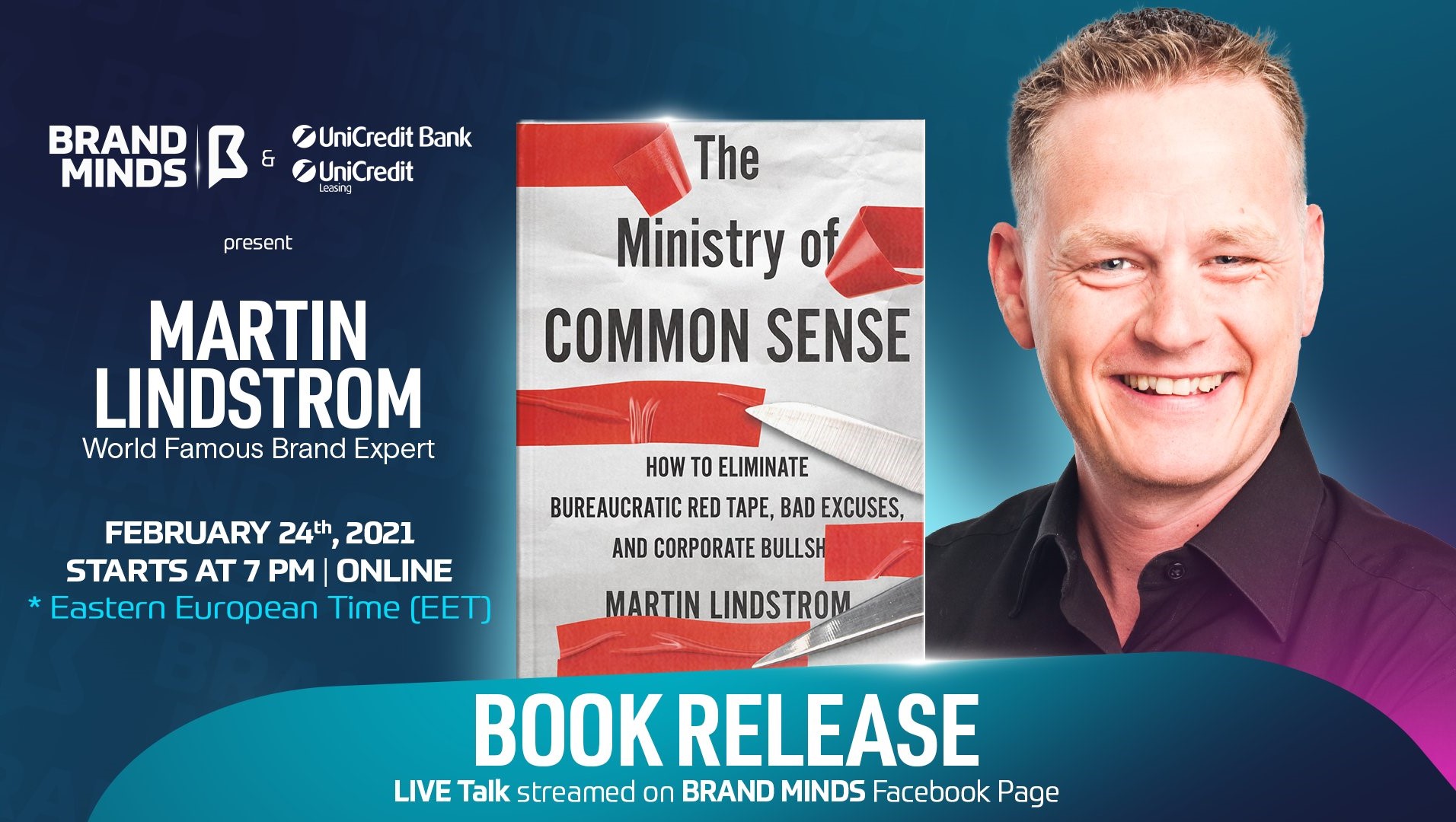
Ministry of Common Sense, a Wall Street Journal bestseller
His latest book, Ministry of Common Sense: How to Eliminate Bureaucratic Red Tape, Bad Excuses, and Corporate BS, debuted straight to #2 on The Wall Street Journal Bestseller list following its launch in January of this year.
In this book, Martin writes about how highly detrimental bureaucracy, rules, and being untruthful can be for one’s business.
Here’s what The Wall Street Journal says about the book:
Best-selling author Martin Lindstrom combines numerous real‑life examples of corporate common sense gone wrong with his own ingenious plan for restoring logic—and sanity—to the companies and people that need it most. A must-read for today’s executives, managers, and employees, The Ministry of Common Sense is funny, entertaining, and immensely practical.
At the time of writing, Ministry of Common Sense has been featured in Yahoo Finance, Inc. Magazine, New York Post, Forbes, The Drum etc.
The Financial Times has nominated Ministry Of Common Sense for their prestigious book of the month.
Blue Ocean Strategy co-author and BRAND MINDS speaker Renee Mauborgne highly recommends Ministry of Common Sense as being “Fun, fast-paced, and as actionable as it is insightful.”
Arianna Huffington, Founder & CEO of Thrive Global says the book is an “Essential reading for all of us who feel bogged down in workplace bureaucracy and wish to improve our quality of life at work.”
Bestselling author of 8 brand and consumer-focused books
Martin’s bestsellers include Buyology, based on a $7-million neuromarketing study, the largest ever done, BrandSense, recognized by Wall Street Journal as “one of the 5 best marketing books ever published” and Small Data which presents a rare behind-the-scenes look at what it takes to create global brands.
To date, his books have been translated into more than 50 languages and published in more than 70 countries worldwide.
Selected by LinkedIn in its 2019 Top Voices list
Martin Lindstrom is a bestselling author, brand and culture transformation expert. He has over 157K followers on LinkedIn.
The platform, now a 700 million-user social network, selected Martin in its 2019 edition of Top Voices. The list highlights professionals in a variety of industries and regions who are building communities and starting thoughtful conversations through their articles, posts, videos and comments.
Martin’s insightful posts on branding, behavioural psychology, culture and innovation are highly deserving of such recognition.
Join the BRAND MINDS community to watch Martin’s live talk!
Top 5 most in-demand soft skills you need to grow in 2021
Looking to develop your soft skills? Read on to discover the Top 5 most in-demand soft skills you need to grow in 2021.
Professional growth and career advancement hinge on the employee’s desire and ability to learn new things.
Whether you are looking to specialize in your field which means you’d want to go deep, or you are looking to diversify which implies going left and right (learn more about the T-shaped marketer), learning never stops. And it shouldn’t, rightfully so.
Over the past few years, LinkedIn, the 722-million member professional social platform, has been curating a list of the most in-demand soft and hard skills employers are looking for.
Here is LinkedIn’s list for the most in-demand soft and hard skills 2020.
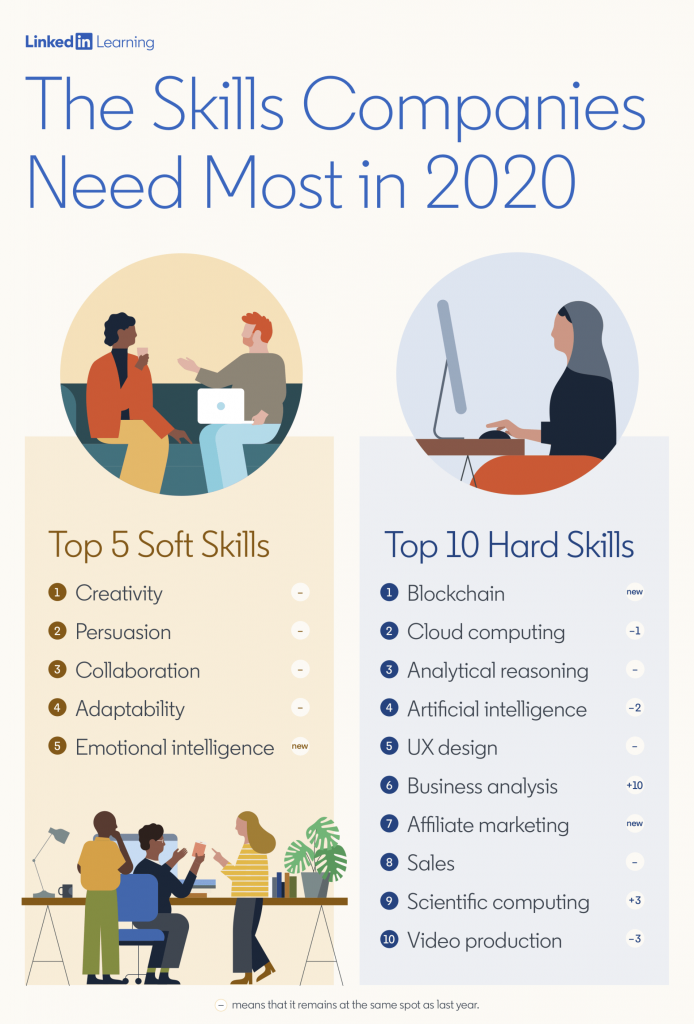
What are the Top 5 soft skills companies look for in their employees and new hires in 2020?
- Creativity
- Persuasion
- Collaboration
- Adaptability
- Emotional intelligence
Let’s talk about each of them.
1. CREATIVITY
Creativity is now the #1 soft skill companies are looking for three years in a row.
Why is creativity in such high-demand?
Listen to creativity expert and BRAND MINDS speaker Denise Jacobs:
Can creativity be taught or is it an inherent trait?
I believe one of the most creative organizations in the world today is NASA. Going into space requires finding solutions to unique problems and even unknown situations. That certainly pushes the brightest minds at NASA to come up with creative and out-of-the-box solutions.
In the 1960s, NASA reached out to Dr George Land, a creative performance researcher and enrolled his expertise in devising a creativity test to help with the selection for innovative engineers and scientists. Dr Land accepted the challenge and devised a creativity assessment that worked very well.
Inspired by the results and curious to know more about where creativity comes from, Dr Land conducted a research study to test the creativity of 1,600 children ranging in ages from 3 to 5 years old. He re-tested the same children at 10 years of age, and again at 15 years of age. And then he extended the testing pool to include 1 million adults.
What exactly did Dr Land test for?
He tested for the ability to look at a problem and come up with new, different and innovative ideas.
Here are the results:
5-year-olds: 98% imaginative
10-year-olds: 30% imaginative
15-year-olds: 12% imaginative
31-year-olds: 2% imaginative
That’s quite a shock, isn’t it?
We are the most creative in our childhood and we lose our creativity growing up.
What is the reason?
Dr Land gave the following explanation in his book, Breaking point and beyond:
What we have concluded is that non-creative behaviour is learned.
Is there something we can do about it?
In his 2016 Tedx Talk, Dr Land says there is a way to undo this process.
Let’s hear from Dr Land (08:37):
First of all, we need to think about creativity beyond artistic abilities.
Artists are not the only creative people.
Professionals in every industry have the ability to be creative. Because in the workplace, being creative means looking at a problem from a different viewpoint and coming up with a fresh solution, as Dr Land explained a few years ago.
It’s not about waiting to be inspired; it’s about thinking creatively.
According to Martin Lindstrom, brand expert and BRAND MINDS speaker, the first step towards creativity is taking time off from your smartphone, observing the people around you and essentially allowing yourself to be present.
2. PERSUASION
In business communication, persuasion is the process of presenting arguments to move, motivate, or change your audience.
Persuasion is one of the most important skills that a leader needs. He has the vision and he sets the goal; he needs to move and motivate his employees to fulfil the vision and meet the goal.
It’s the leader who tells his colleagues Come with me and let’s accomplish the mission together. This is the authoritative leader who provides employees with inspiration, motivation, empowerment and a sense of accomplishment.
Or the visionary leader whose motto is Embrace my vision. This type of leadership is called visionary leadership. The visionary leader must hone his persuasion skills to inspire and motivate people to pursue a long-term vision. Learn more about leadership styles: 12 Leadership Styles for Successful Leaders (complete list) with Pros & Cons.
Persuasion skills are necessary for sales and marketing as well. With a 30-year career researching the science of influence, Dr Robert Cialdini is the world’s most renowned persuasion expert and a BRAND MINDS speaker.
His Theory of Influence is based on seven key principles:
- Reciprocity,
- Commitment and consistency,
- Social proof,
- Authority,
- Liking,
- Scarcity,
- Unity.
Brands build on them to increase brand awareness and sales. Dr Cialdini’s latest insights on persuasion are in his 2016 book Pre-Suasion: A Revolutionary Way to Influence and Persuade.
3. COLLABORATION
We are living and working in a fast-paced environment.
Startups with a handful of employees that work as one are able to move quickly and more efficiently. Corporations with thousands of employees are slow and bureaucratic.
There are many examples of hundred-year-old brands outcompeted by new entrants on the market.
That’s where agility comes into play as a way of organizational transformation with one goal: adapt.
Want to learn more about agility? Read 22 benefits of the agile organization.
For an organization to become agile, its employees must form small teams. Every team member is expected to collaborate with each other. And that’s more difficult than you might think.
To meet the set goals, team members must learn to listen to each other, be supportive, be generous, learn to communicate clearly and openly, share knowledge and information, refrain from judgement, reject bias, debate and adapt.
The team leader must also be an example of effective communication and collaboration.
4. ADAPTABILITY
At the time of writing, the world has been fighting to end the COVID-19 pandemic for almost a year.
Our private and professional lives have been profoundly affected.
Many businesses are fighting to survive while others have already closed their doors. Adaptability has never been more important.
Why are companies looking for employees with a high ability to adapt?
Because these employees are a great asset to the company.
Highly-adaptable employees are:
- Willing to experiment;
- Undeterred by failure;
- Use the failure as an opportunity to learn;
- Resourceful;
- Keep an open mind;
- Have a growth mindset.
5. EMOTIONAL INTELLIGENCE
Emotional intelligence is a new entry in LinkedIn’s Top 5 most in-demand skills of 2020.
Why are companies looking for emotional intelligent employees?
Let’s first find out what is emotional intelligence.
Emotional intelligence is the ability to perceive, evaluate, and respond to your own emotions and the emotions of others. It’s the skill that facilitates and nurtures the other four.
Daniel Goleman, one of the world’s leading psychologists and BRAND MINDS speaker, introduced the concept of EQ or emotional intelligence in his 1995 bestseller, Emotional Intelligence.
According to Daniel Goleman, there are 5 key elements of emotional intelligence:
- Self-awareness;
- Self-regulation;
- Motivation;
- Empathy;
- Social skills.
Employees with high EQ collaborate better, are more adaptable, use persuasion for the right reasons, are motivated and able to motivate others.
The workplace benefits from increased engagement and the business are more likely to find creative ways to stay ahead of the competition.
Join the Conversation
We’d love to hear what you have to say.
Get in touch with us on our LinkedIn Page, Facebook Page, Twitter or TikTok.
What you can learn from Martin Lindstrom’s latest book – ‘Small Data’
Here are 3 insights from Martin Lindstrom’s book you can use to improve your marketing.
Check out the video!
20+ Valuable Marketing Quotes and Insights From Experts (1 of 2)
Curious to learn what the latest valuable marketing quotes and insights are?
Marketing never stops spinning and marketers never stop learning. To help you update your knowledge and show you new directions, I put together a list of 20+ marketing quotes and insights from 20 marketing experts.
This article includes insights and quotes from Ann Handley, Jay Baer, Chris Brogan, Rand Fishkin, Tara Hunt, Seth Godin, Mark Schaefer, Martin Lindstrom, Mari Smith and Gary Vaynerchuk.
20+ Valuable Marketing Quotes and Insights From Experts
1. Ann Handley – Go Smaller & Slay the Ignosaurus
We’ve all heard of the Go big or go home saying. Writer, speaker and digital marketing pioneer Ann Handley makes a 180 turn and goes in the opposite direction. She invites marketers to thing bigger, but go smaller. Why?
Small stories are specific. Small stories are human-scale.
Ann Handley
Making the story smaller and more specific is the best way for products, services or B2B solutions to break through the noise of social media and get listened to by their customers.
Big and bold stories are often best told in small and specific ways. Find the specific details—and use them to engage the heart, not just appeal to the head.
Ann Handley
But in order to be able to tell these stories, we need to slay the Ignosaurus, the beast that we thought had disappeared together with the other dinosaurs.
Ignosaurus is lazy, bored, and goes through the motions with no engagement on the job.
Ann says a vast majority of marketers today are Ignosaurus in disguise.
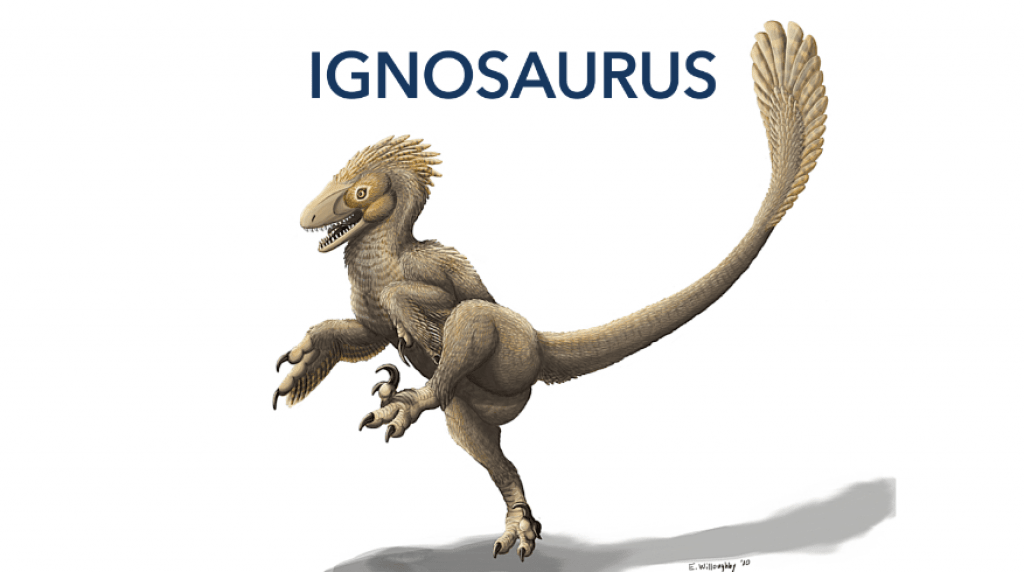
annhandley.com
She wants marketers to slay the Ignosaurus within and start experimenting, making changes.
In order for the industry to evolve marketers need to be curious and stay alert.
Study after study has shown that Marketing has one of the most pronounced skills gap of any industry. Many of us feel that we don’t have the skills we need to produce our best work.
Ann Handley
2. Jay Baer – Relevancy is a Value Exchange
Is your marketing failing?
Author, speaker and founder of Convince & Convert Consulting Jay Baer believes the reason your marketing is failing is the lack of relevancy.
Customers and prospects are trading their attention for your information. If they refuse to do so, it’s because your information does not matter to them enough sufficiently for them to trade attention for that information.
The key to being more relevant isn’t hard-it just takes time. The key to being more relevant is to understand your customers better.
The truth is that most modern marketers don’t actually interact with customers very much anymore, and that robs us of a really important success ingredient: insights.
Jay Baer
How do you get insights?
Not from reading spreadsheets or reports.
Jay says most marketers today have never seen their customers which is really sad.
How can you design marketing strategies and campaigns if you don’t know who are you talking to?
You need to change that today.

Leave the office and make contact. Spend time with your customer service and your sales team to learn what your customers’ problems are, what questions they ask, how they talk etc.
Almost no great marketing happens behind your desk. Great marketing occurs when you actually take the time to spend time with your customers and learn what they really need and what they’re really all about.
Jay Baer
3. Chris Brogan – Invite People to Your Picnic
I think even the biggest companies have to get a bit more “picnic-sized” in their looking at outreach, attraction, sales, and conversion. If you speak to everyone, you’re heard by no one. Sure, make your big ads say whatever they’re saying, but use your other resources to reach and engage with specific groups at a time.
Chris Brogan
How can a company reach people and serve those who would benefit from their services and products?
Speaker, author and marketing expert Chris Brogan says marketers need to make their customers feel seen and understood. Only then will they be ready to buy.
How do you make your customers feel seen and understood?

You need to split your customers into several communities of personas. Make groups for every community of people you think you can best serve. And then invite them to a picnic, online or offline and make them feel they belong. That’s how revenue is generated – by earning the attention and trust of all those people out there who feel invisible.
4. Rand Fishkin – The True Marketing Trends for 2019
Former founder of Moz and current founder of SparkToro Rand Fishkin believes marketing trends like video content, turning to the human side of marketing and data-driven creativity are completely non-actionable and can hardly be called trends for 2019.
Instead, he made a list of the trends he believes will have an impact on marketing in 2019.

Here they are:
- In the next few years, the US and other parts of the world will experience an economic recession which is already changing customers’ behaviour;
- The undue influence of big businesses and monopolies which resulted in bad news for citizens: GDPR, the loss of Net Neutrality, Articles 11 and 13;
- A recent analysis showed a dramatic slowdown in the global growth of internet access. To keep making the same revenue as in past years, most internet giants compete with publishers, limit organic reach, cannibalize clicks and make channels pay-to-play;
- Voice Answers have the potential to disrupt any competitive opportunity to appear in results and earn traffic and value;
- The emerging, broad societal belief that overuse of social networks and heavy web content consumption do more harm than good. Many people today are limiting their screen time and their children’s.
What steps is your company taking to adapt to the future?
5. Mark Schaefer – The Belonging Crisis
Author, speaker and marketing expert Mark Schaefer says
Most of our marketing is occurring without us because today the customers are the marketing department. The new challenge for a company is to be invited to those organic conversations.
We live in an era when hyper-empowered consumers control the brand narrative.
In the past, a “brand” is what we told our consumers. Today, a brand is what our customers are telling each other.
Mark believes there is a belonging crisis today in the world.

Here is what marketers should do to help companies overcome this trend according to Mark:
- Align with the values of your young customers, empowering their voices, and creating deep emotional attachments with customers that result in loyalty;
- Help your customers feel connected;
- Provide personal attention to your customers. “It’s not “personalized” — it’s personal!”
- Nurture like-minded customer “islands” on Facebook and other spaces;
- Use true personal connections instead of automated messages and spammy responses;
- Traditional ads that lead to “awareness, trial and loyalty” don’t work so well any more. Build a brand from a place of empathy and personal pain;
- Assemble a tribe, united in their belief in how the product or service connects them to their individual lives and to their communities.
6. Mari Smith – Use Stickers in your Facebook Video Ads
Often referred to as the Queen of Facebook, Mari Smith provides marketers with many valuable and useful insights on Facebook and Instagram marketing.
Stickers on videos can significantly improve the performance of your Facebook ads.
Mari Smith
Mari and her team performed a test to see how stickers influence the results of Facebook video ads.
Here’s what she found:
- Cost per result for ads with stickers was almost 33% lower;
- Both Conversion rate and CTR were higher;
- Stickers don’t impact interest in the ad copy so much as generate interest in the advertised product;
- If you are looking to use stickers in your Facebook video ads pay attention to the number of stickers you add, don’t overdo it!

7. Gary Vaynerchuk – The $1.80 Instagram Strategy
Gary Vaynerchuk spent the last 10 years of his career trying to understand user psychology and reverse engineer attention into an engaged community online.
The truth is, the way to win on social media is to actually be social. The number of Instagram followers you have means nothing if you can’t build a community of like-minded people who care and engage. The only real way to do this from scratch is to become part of the conversation.
Gary Vaynerchuk
That’s how he came up with the $1.80 Instagram strategy.
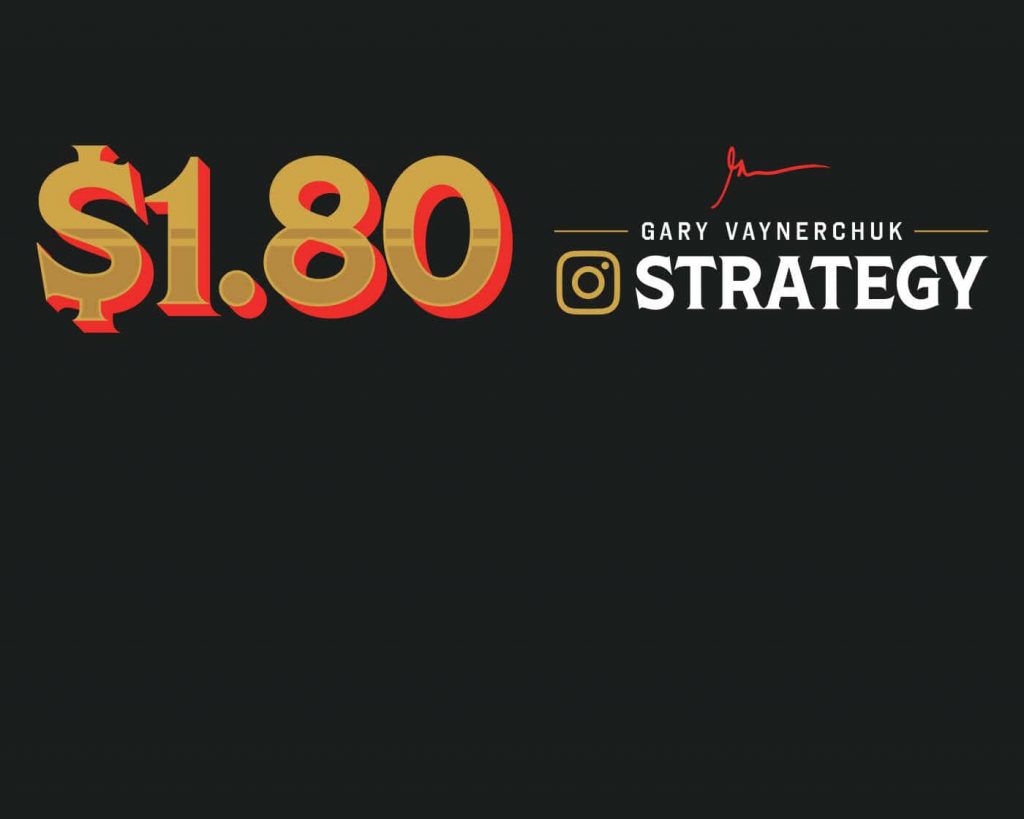
garyvaynerchuk.com
What is the $1.80 Instagram strategy?
It’s leaving your personal .02 cents on the top 9 trending Instagram posts for 10 different hashtags that are relevant to your brand or business every single day.
All you need to do is provide value where you can and it only takes 2 minutes a day. He says it’s exactly the strategy that always worked for him – becoming part of the community. The result is you will have meaningful connections, not bots. And this kind of connections is the most valuable.
8. Tara Hunt – No, that’s not marketing
Executive-level digital marketing professional Tara Hunt makes it clear on what marketing is not.
Contrary to popular believe, advertising isn’t the same as marketing. PR is not the same as marketing. Communications isn’t the same as marketing and Branding isn’t the same as marketing either. Even Sales is often completely separate from marketing. Brand and advertising and PR and content and digital and consumer insights and pricing and social and events and product and positioning and communications and a whole bunch of other stuff are all part of the marketing toolkit, but they aren’t “marketing.”
Tara Hunt
Videos, podcasts and content, in general, are great tactics for the right audience but they’re not marketing. They won’t automatically open the floodgates of customers.
Here’s what marketers should do according to Tara:
- Understand their market;
- Understand if they have the right product for that market (if not, let their client know they are focusing on the wrong market or need to change the product);
- Identify the right channels of distribution for both product and message;
- Put it all together in a measurable plan.
Anything less is not marketing.
9. Seth Godin – 10 words per page
Seth Godin is the only person to have been inducted in the Direct Marketing Hall of Fame and the Marketing Hall of Fame. His blog is one of the most successful blogs in the world with 7000 published articles and millions of readers.
We are also proud that Seth Godin was one of the keynote speakers at BRAND MINDS 2017.
Here are 4 insightful quotes:
Any metric you can buy your way out of is probably not a useful metric to measure yourself by.
![]()
Every interaction you have with a customer either strengthens your relationship (because it’s mutually beneficial) or weakens it. Weaken it enough time and you break it.
Ten words per page
That’s how many words get scanned the first time through. Perhaps five on a billboard.
Which means that your memo, your ad, your announcement, your post–you get ten words.
If you can begin with the ten words and write around them, you have the foundation for an effective message.
When in doubt, when your marketing isn’t working, the answer is easy: go one circle in.
seths.blog
10. Martin Lindstrom – Build Anticipation
Neuromarketing and branding expert Martin Lindstrom draws attention to the concept of anticipation.
Anticipation is the feeling of excitement about something that is going to happen in the near future. It is a powerful feeling and it is directly linked to connectedness and engagement over a longer period of time.

In our world of on-the-spot gratification, how are brands leveraging anticipation to keep their customers close and engaged? Technology has taken anticipation away.
From a rational point of view, anticipation is nothing more than an illusion, a myth, a chimaera; but from a subconscious, storytelling, and emotional point-of-view, anticipation makes all the difference. It is the bride’s months-long excitement as she chooses her gown, the anxious lead-up to graduation day, the indescribable feeling as the newborn baby finally arrives home and settles into its beautifully decorated bedroom.
Martin Lindstrom
If your brand offers experience, anticipation plays an important role in your customers’ perception of it. Anticipation has the power to make the wait much more rewarding and it makes all the difference. It sets your brand apart from your competitors and influences the bottom line.
Stay tuned for part 2!
Join the Conversation
We’d love to hear what you have to say.
Get in touch with us on Facebook Group and Twitter.
Martin Lindstrom LIVE at BRAND MINDS 2020
Martin Lindstrom is a World Famous Marketing expert and a keynote speaker at BRAND MINDS 2020.
Read on to learn more about him.
World-Renowned Consumer Expert and Brand Consultant
When you are passionate about a hobby, a science field or an artist, you read everything there is available on that particular topic. Focused passion turns into an obsession (the good kind of an obsession): you breathe and live it, you know everything there is to know about it, you are an expert on it.
Martin Lindstrom is one of the world’s most respected consumer branding experts and a pioneer in the fields of consumer psychology, marketing, and neuro-marketing research.
He experienced the power of the brand from both sides: as a consumer and as a branding expert.
Here is his story.
Lego, my love
As a child growing up in Denmark, Martin loved Lego, the famous toy manufacturer. He loved the practicality of the toy. He slept in a bed which he handbuilt himself of Lego parts. He wore clothes in Lego’s colours. Yes, Martin was obsessed with Lego.
Success Story: LEGO – Building the skills of tomorrow
At 11 years old, Martin wished to share his Lego love with the world and built his own Legoland, a miniature village complete with trees, canals, houses and ships constructed entirely out of Lego parts.
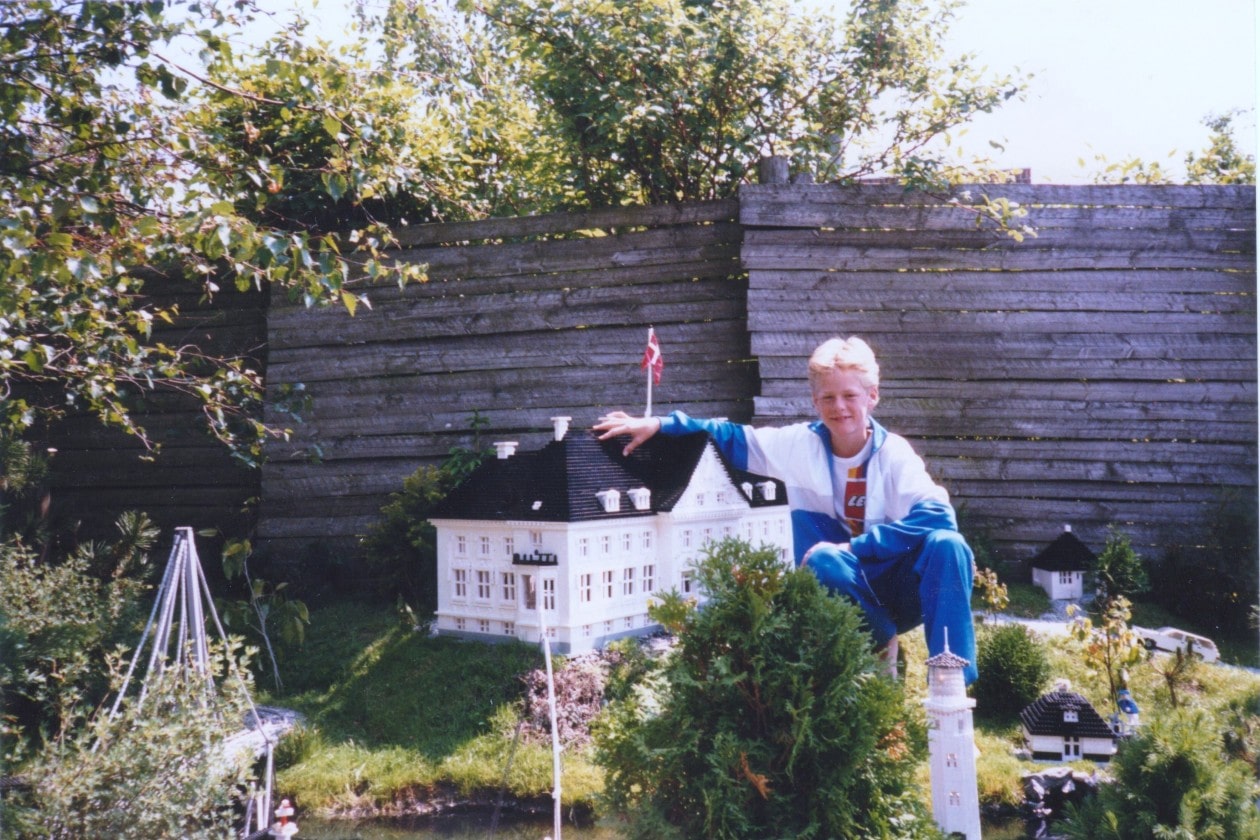
11-year old Martin Lindstrom in his Legoland / bandt.com.au
His first lesson in advertising
When he opened the doors of his Legoland, expecting visitors, to his disappointment no one came. He quickly realized his mistake: he hadn’t advertised. So he rushed to the local newspaper and persuaded them to run his ad touting his amazing Legoland. That’s when he learned a very important lesson: the power of advertising. In the following week, he received over 100 visitors.
A year later, at the age of 12, Martin Lindstrom opened his own marketing agency thus embarking on a very successful life journey through the ups and downs of branding, marketing and consumer psychology.
Embarking on a new mission
By the age of 30, Martin Lindstrom had become one of the most respected names in the industry having worked for BBDO, the renowned international advertising agency.
In 2009 he changed direction turning from brand consultant to consumer advocate.
He embarked on a new mission: to help consumers make smarter, more informed buying decisions and to help brands transform their business culture by placing the customer at the heart of everything.
How would he achieve his mission?
- By exposing the many ways brands manipulate and deceive us, the consumers;
- By raising the covers of the best-kept tricks and secrets of the marketing and advertising world;
- By helping brands challenge established thinking and drive business and culture transformation.
That’s why Martin Lindstrom is a #worldchanger.
When we brand things, our brains perceive them as more special and valuable than they actually are.
Martin Lindstrom
Author of 7 brand and consumer-focused books
Martin Lindstrom authored seven books which have been translated into more than 50 languages and published in more than 70 countries worldwide.
Small Data: The Tiny Clues That Uncover Huge Trends The New York Times Bestseller
The book presents a rare behind-the-scenes look at what it takes to create global brands, and along the way, reveals surprising and counterintuitive truths about what connects us all as humans.
A modern-day Sherlock Holmes. An original and inquisitive mind harnesses the power of “Small Data” in his quest to discover the next big thing.
Time Magazine
Buyology: Truth and Lies About Why We Buy The New York Times & Wall Street Journal Bestseller
What truly influences our decisions in today’s message-cluttered world?
This book is based on Martin’s $7 million neuromarketing study, the largest ever done.
The study is a cutting-edge three-year experiment which explores the truth and lies about why we buy. Using fMRI to peer inside the brains of 2000 volunteers while being shown various ads, logos, commercials, brands, and products, the experiment’s findings were astonishing.
One of the campaigns tested in this experiment was the tobacco packaging warning messages. Even if you are not a smoker, you have certainly seen the disturbing images of tobacco-related harms (i.e. lung cancer, rotting teeth or premature birth etc) printed on the cigarette packs. Do these images achieve the intended goal? Do they influence smokers to give up smoking?
As Martin’s extensive experiment showed, the answer is NO. When asked if they smoked less as a result of seeing the warnings, participants answered YES, but the brain scans told a different story: they were not actually smoking less. They only said they did because this was the answer expected of them. People lie, but their brains tell the truth.
BrandWashed: Tricks Companies Use to Manipulate Our Minds and Persuade Us to Buy
In this book, Martin exposes for the first time the full extent of the psychological tricks and traps that companies devise to win our hard-earned money.
BrandSense: Sensory secrets behind the stuff we buy The New York Times Bestseller
…one of the 5 best marketing books ever published.
Wall Street Journal
What role do human senses play in the decision-making process?
In ‘Brandsense’, Lindstrom explores this subject looking for answers and shows how marketers, armed with this knowledge are able to push the purchase buttons – stronger than ever before.
Brandchild: Remarkable insights into the minds of today’s global kids and their relationship with brands
Your name may be on the card but your kid is actually buying what you’re paying for. Teens and younger children are the consumers of tomorrow. In ‘Brandchild’, Lindstrom reveals the findings of the biggest research study ever conducted on kids. He also shows how brands cater to the needs of the next generations by establishing early relationships.
Clicks, Bricks & Brands
Is traditional retailing drawing its last breath? Have online retailers figured everything out? Do all offline retailers need to transition to online? Do e-retailers need to have brick-and-mortar shops?
In his book, Lindstrom explores the challenges of retail with an intriguing mix of theory, case study and practical advice.
Brand building on the internet
The book features reviews of over 70 international websites and 40 case studies on world-famous companies (Pepsi, LEGO, Yellow Pages, M&Ms, FedEx, Kodak, Volkswagen, Visa). In it, Lindstrom shows how to build brands online based on a strategic way of thinking.
Products are produced in the factory; brands are produced in our minds.
Martin Lindstrom
Advisor to numerous Fortune 100 companies
He is a trusted brand-and-innovation advisor to numerous Fortune 100 companies, including McDonald’s Corporation, PepsiCo, American Express, Microsoft, Nestlé, The Walt Disney Company and GlaxoSmithKline.
100 Most Influential People
In 2009, TIME Magazine named Lindstrom one of the World’s 100 Most Influential People for his groundbreaking work on neuroscience and branding.
In 2015, Thinkers50 ranked Martin number 18 amongst the world’s most influential management thinkers.
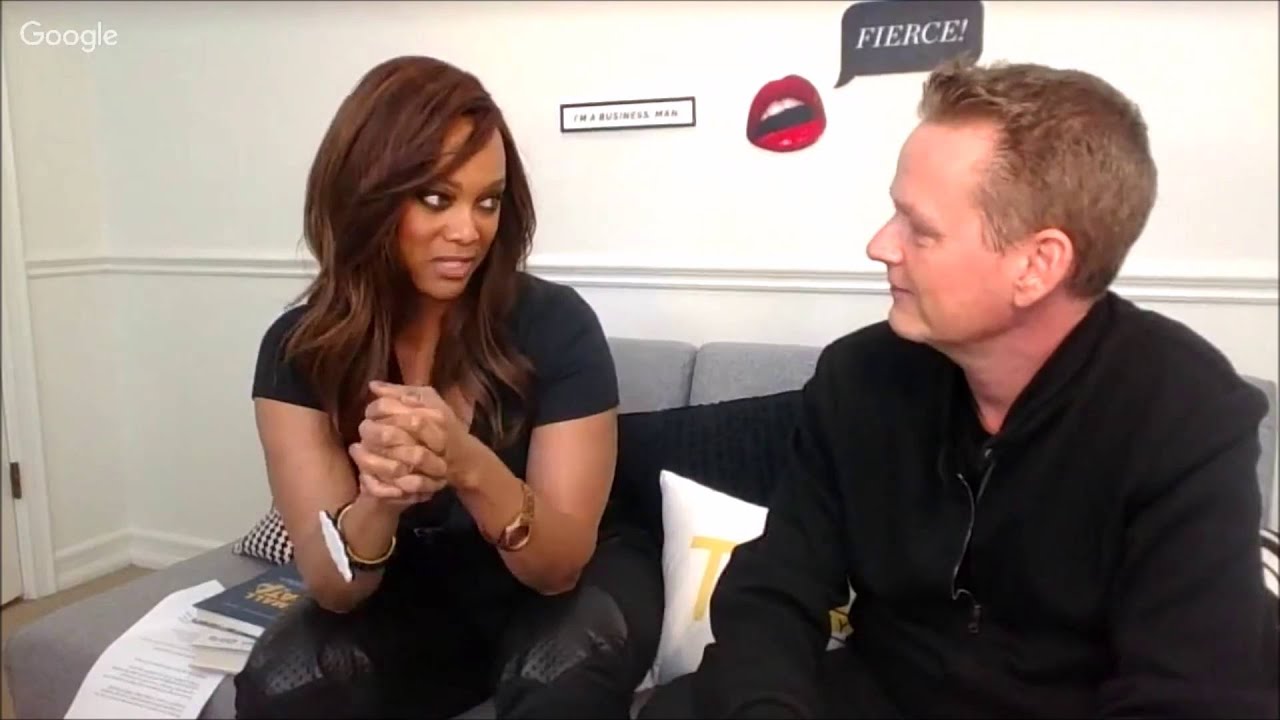
Martin Lindstrom and Tyra Banks / YouTube
Featured on major TV Networks, shows and publications
He is the anchor and producer of NBC’s popular TV show; ‘Main Street Makeover’ on TODAY; a columnist for Fast Company and TIME Magazine – and continues to feature in the Wall Street Journal, Newsweek, The Economist, New York Times, Bloomberg Businessweek, The Washington Post, USA Today, and numerous publications and television channels worldwide.
Lindstrom has also been interviewed by David Frost, Tyra Banks – with whom he was a celebrity guest on her America’s Next Top Model Show – and the legendary Deepak Chopra on his YouTube show, One World.
MARTIN LINDSTROM ABOUT from Martin Lindstrom on Vimeo.
Join BRAND MINDS 2020 – The Growth Weekend on September 25th and watch Martin Lindstrom speak about Discovering global trends!
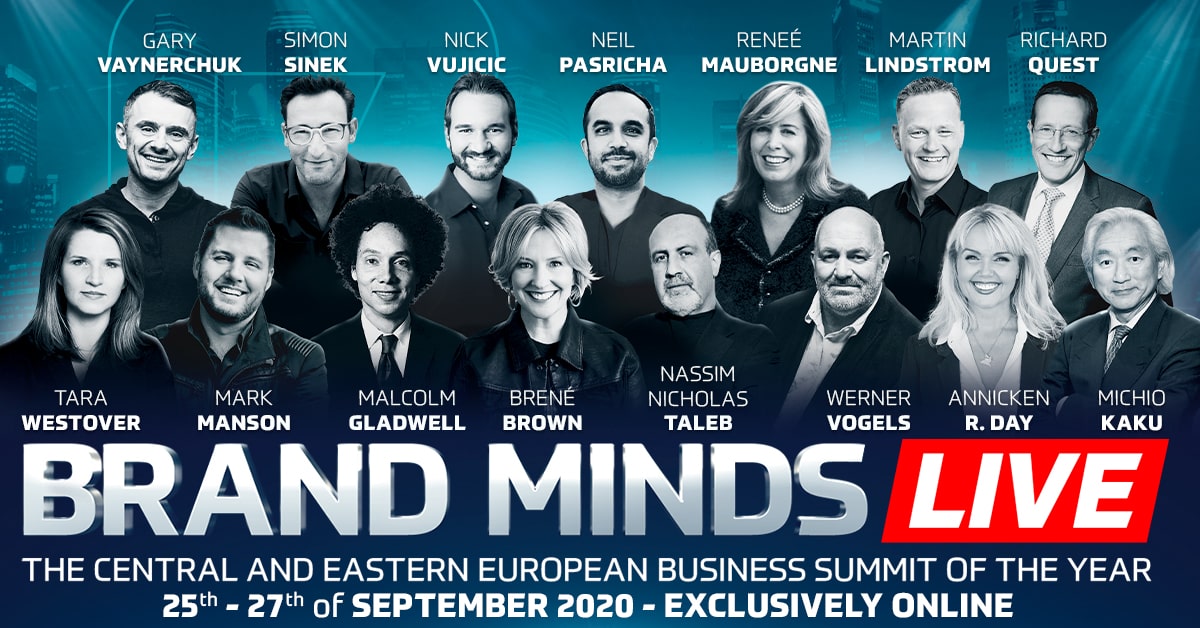
The power of smell as a tool in the marketing strategy
Businesses looking to sniff out a commercial opportunity have been aware of its power for a long time. According to the Sense of Smell Institute, people are able to recognize approximately 10,000 different odors and are able to recall smells with 65% accuracy after a year, in contrast to only 50% of visuals after three months.

source: Stuff
Martin Lindstrom found that brand impact increased by 30% when more than one sense is engaged and by a whopping 70% when three senses are integrated into the brand message. Scents have an immediate and compelling effect as they are directly linked to the brains limbic system which is the part of the brain responsible for our memories and emotions. Therefore scents go beyond our rational perception and have an ultimate impact on our emotions.
Moreover, smell is the most powerful and emotional of all the senses. By using scent, brands are able to connect with consumers on a deeper emotional level, resulting in a more memorable experience. Scent can attract new customers, increase sales, heighten value perception, and expand brand recognition and customer satisfaction. A scent has the ability to influence behavior and trigger memories almost instantaneously. When smell is combined with other marketing cues, it can amplify a brand experience and establish a long lasting connection with consumers.
The right scent can depend on several factors. Research by Eric Spangenberg, the dean of the college of business at Washington State University, who has been researching the effect of smell on customer behavior since 1996, has found that it affected everything from cultural norms, gender and appropriateness to the product. “Another area where we’ve seen effects is if you’ve got a scent that’s congruent with a season. So, for instance, shopping and the seasonal effects of scent – people expect Christmas to smell like cinnamon or something like that,” he says.
Comparing this with a scent more appropriate for Easter, he found positive effects for the seasonal smell and negative effects for the incongruous one. “Using the correct smell is crucial. For businesses across many sectors, getting their fragrances right could mean the difference between the lingering stench of failure or the sweet smell of success,” writes The Independent UK.
“Smell has been a somewhat neglected sense in terms of being used to help differentiate brands, so scents are one of the final frontiers for marketers,” explains Maureen Morrin, professor of marketing at Temple University’s Fox School of Business and coauthor of a research study on the effects of ambient scent on consumer preferences and choice behaviors. “Hotels have created their own proprietary scents that are not just emitted in public spaces, such as the lobby and workout rooms but also often integrated into their toiletries. Not only is the odor pleasant, but it also comes to have unique associations with the brand over time,” she added, quoted by Sarah Bergen for Lodging Magazine.
Because sense of smell is tied to the side of the brain that processes memories and emotions, the appropriate use of scent can positively impact the perception of a brand, customer loyalty, and even the attitude of the staff. “We’re where music was 15 years ago. You wouldn’t walk into an established retailer today without some sort of music playing, but that wasn’t the case 15 or 20 years ago. You can walk into a beautifully designed space, and it’s rendered meaningless if there’s a bad smell or an absent smell,” said Roger Bensinger, exec VP of AirQ by Prolitec, which works with Abercrombie & Fitch, Hard Rock Hotel & Casino and Giorgio Armani, among others, quated by AdAge. ”
The researchers hypothesized that the degree of complexity of a scent may affect the consumer’s ability to process that olfactory information. The less complex a scent, the easier it is to process, and the greater its influence on associated attitudes and behaviors. This should translate into more favorable consumer responses to the retail environment and associated products.
